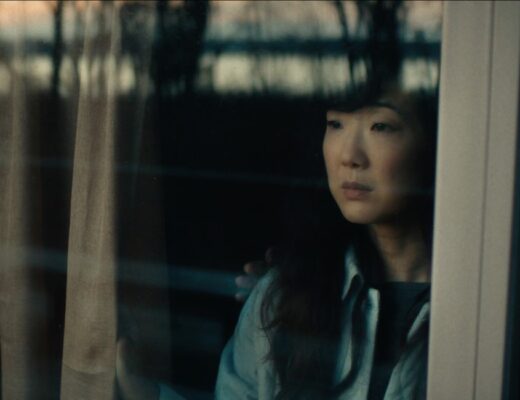“Imagine there’s no heaven / It’s easy if you try / No hell below us / Above us, only sky.” On October 11, 1971, John Lennon released “Imagine,” the opening track and first US single from his sophomore solo album of the same name. Although it peaked at #3 on the Hot 100, “Imagine” would eventually become Lennon’s best-selling solo single, and would largely define his musical legacy outside the Beatles. In the first lines, Lennon asks us to imagine no heaven, and in the second verse adds, “And no religion too,” an ironic instruction given the film’s very hymnal-like quality.
Lennon had already built a reputation as an acerbic iconoclast even while in the Beatles, having infamously raised public ire by saying his band was more popular than Jesus. As the sixties shaded into the seventies, his affinity with radical politics — greatly influenced by his relationship with Yoko Ono — grew even more pronounced. The lyrics to “Imagine,” at least on paper, would seem to fall perfectly in line with this particular radicalism. Lennon proposes eradication of religion, national borders, capitalism, and war, which is as close to an endorsement of anarchy as has ever been put into a pop song. Judging from interviews he gave at the time and for years after, Lennon seems to have believed he put one over on the listening public, smuggling his radical message into this saccharine, radio-friendly melody; but when one considers how the song has been used by many others in the 50 years since its release, it’s probably far more accurate to conclude that Lennon’s subversive message has been almost completely defanged by the medium through which he chose to deliver it. For all the song’s suggestions of the dismantling of political and societal structures, it doesn’t call for the listener to actually take any action; it just asks us to imagine these scenarios, and passively muse on how great they would be. Lennon sings on the chorus: “You may say I’m a dreamer / But I’m not the only one / I hope someday you’ll join us / And the world will be as one.” Lennon posits the astoundingly naïve notion that if we all just got together and shared this sweet dream, that alone would be enough to achieve a massive deconstruction of the world order, to be replaced with… what, exactly? Lennon has no answers for that. What’s more, Lennon may not have been the best messenger for these ideas; some observers were quick to call bullshit on a rich rock star asking us to “imagine no possessions.”
As a result, what Lennon may have intended as a promotion of far-left politics has instead become a boomer peacenik anthem vague enough to be appropriated for pretty much any positive-seeming purpose, the aural equivalent of comfort food. It’s been the go-to song offering solace following tragic events, from the 9/11 terrorist attacks to the 2015 Bataclan theater mass killings. It’s been performed at the Olympics four times, most recently in Tokyo this past summer, by a chorus featuring John Legend and Keith Urban. The song was also notoriously covered last year during the early days of the COVID-19 pandemic lockdown, in a godawful, rightly lambasted rendition inflicted upon the world by Gal Gadot and bunch of other bored celebrities stuck at home. Such is the simultaneously uplifting and dubious legacy of “Imagine.” But despite the title track’s overwhelming legacy, Imagine contains other songs with far more cogent expressions of direct political protest than its most well-known cut. The angriest of them is “Gimme Some Truth,” the album’s strongest track, basically a laundry list of folks who piss Lennon off. Dispensing with any sort of musical intro, he launches right into his verbal attack, spitting out the lyrics with a proto-rap cadence: “I’m sick and tired of hearing things /From uptight, short-sighted, narrow-minded hypo-critics / All I want is the truth / Just give me some truth.” Punctuating this temper, old bandmate George Harrison matches Lennon’s verbal fireworks with a wicked, seething slide guitar solo.
The objects of Lennon’s lyrical fury weren’t just broadly sociopolitical; he could also operate within a mode of painful specificity. He preaches about “a brotherhood of man” on “Imagine,” but clearly this didn’t include Paul McCartney, the unfortunate target of the vicious diss track “How Do You Sleep?” Post-Beatles breakup, Lennon was still publicly feuding with McCartney, who obliquely criticized Lennon and Ono on the song “Too Many People,” from his album Ram, released earlier in 1971. Lennon’s response leaves no room for ambiguity: “A pretty face may last a year or two / But pretty soon they’ll see what you can do / The sound you make is muzak to my ears / You must have learned something in all those years.” Lennon rips into McCartney’s oeuvre with palpable glee, and accordingly, this track functions as both great music and great music criticism. But beyond the anger and bile, Imagine also displays Lennon’s more vulnerable side: “Jealous Guy” is Lennon’s rueful and anguished, if rather self-serving, apology to Yoko Ono for his possessiveness; Lennon questions his own capacity to love and be loved in “How?”; “Oh My Love” and “Oh Yoko!” both find Lennon reveling in the intense pleasures of his relationship with Ono. Together with Lennon’s previous solo album, the much rawer and far less commercial John Lennon/Plastic Ono Band, Imagine represents a compelling, comprehensive self-portrait of one of rock’s most beloved and influential artists.
Part of Kicking the Canon – The Album Canon.







